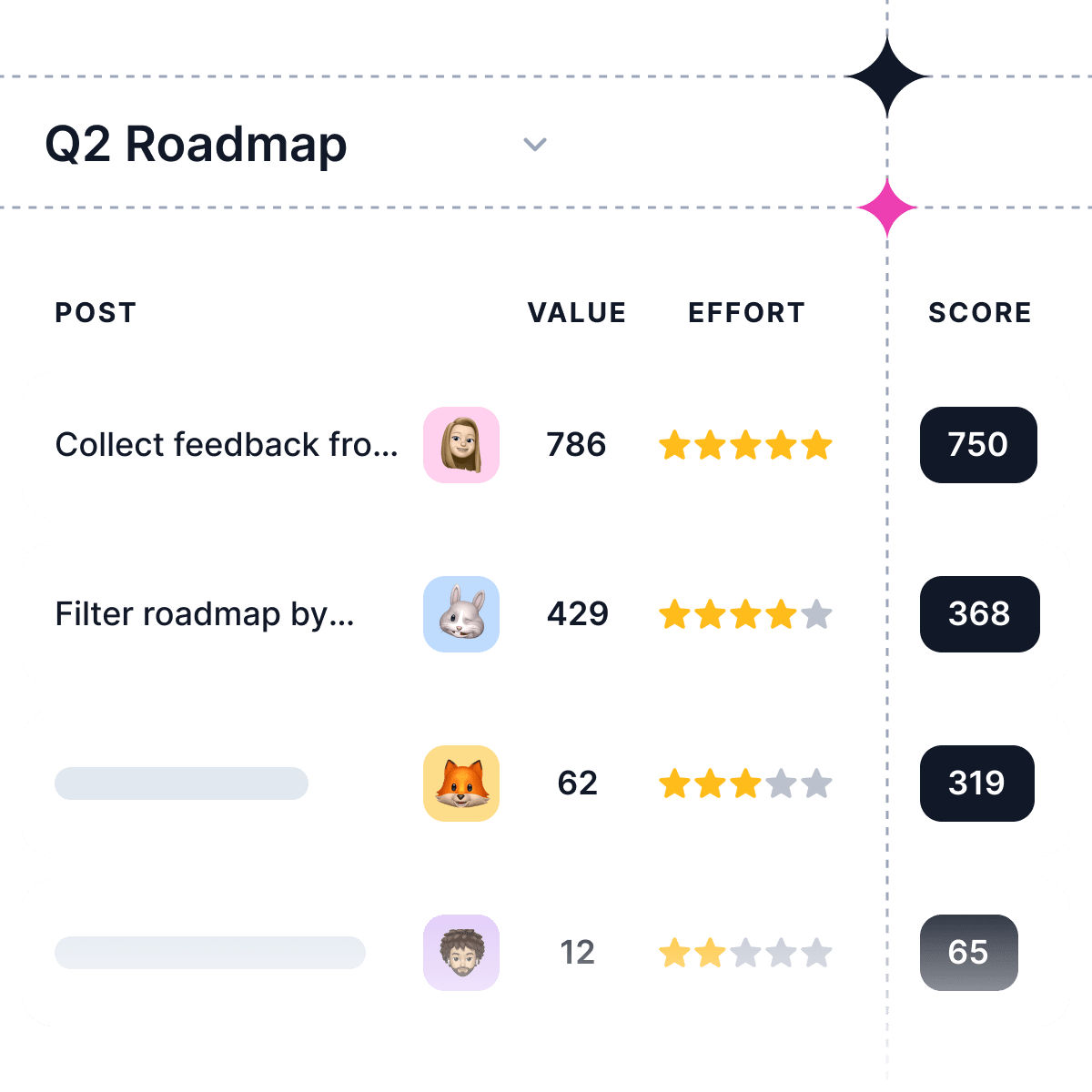A well-structured product roadmapping process provides a solid foundation for your product's success and helps you prioritize features, allocate resources, and communicate your plans effectively to stakeholders. In this comprehensive guide, we will explore the product roadmapping process, its benefits, best practices, and tips for creating a realistic and achievable roadmap.
Whether you're a seasoned product manager or new to the field, this guide will equip you with the knowledge and tools needed to develop an effective product roadmap and enhance the success of your product.
What is Roadmapping?
Roadmapping is a strategic planning process that helps organizations define, communicate, and coordinate their product or project development initiatives. It involves creating a roadmap, which is a high-level visual representation of the organization's goals, timelines, milestones, and major dependencies involved in the project. A product roadmap is a plan of action used by the product team that outlines the vision, goals, and progress of a product over time. It is a tool that aligns the organization around short and long-term goals for the product or project, and how they will be achieved.
Roadmapping helps organizations prioritize their initiatives, align stakeholders' priorities, and track progress. The process can be used to develop a strategic plan for new products or to enhance or improve existing ones. It provides a framework for decision-making, as well as a communication tool for sharing priorities and progress with stakeholders.
What is a Product Roadmapping Process?
Product Roadmapping Process is a strategic approach that helps organizations plan, communicate, and execute their product development initiatives. It involves creating a product roadmap, which is a visual representation of the product's vision, goals, and planned features or enhancements over a specific timeframe.
The product roadmapping process typically involves the following steps:
Step 1: Define the Business Objectives
The first step in the product roadmapping process is to define the business objectives. This involves understanding the company's mission and vision and identifying the key business goals. The product roadmap should align with the company's objectives and help achieve its goals.
Step 2: Gather Customer Feedback
The next step is to gather customer feedback. This involves understanding the customers' needs, preferences, and pain points. Customer feedback can be obtained through surveys, focus groups, or interviews. The product roadmap should address the customers' needs and provide solutions to their pain points.
Step 3: Prioritize Features
The next step is to prioritize the product features. This involves identifying the most important features and functionalities that the product should have. The product roadmap should prioritize the features based on their importance and alignment with the business objectives.
Step 4: Define Timelines and Milestones
The next step is to define the timelines and milestones. This involves setting realistic deadlines for the development of the product features and functionalities. The product roadmap should include timelines and milestones that are achievable and aligned with the business objectives.
Step 5: Communicate the Product Roadmap
The final step is to communicate the product roadmap. This involves sharing the product roadmap with the stakeholders, such as the product team, executives, and customers. The product roadmap should be communicated clearly and effectively and should provide a clear view of the product strategy and development plans.
What are the benefits of the Product Roadmapping Process?
The product roadmapping process offers several benefits to businesses, including:
Alignment with Business Objectives
The product roadmap helps businesses align their product development with their business objectives. It provides a strategic tool for prioritizing features and functionalities that are aligned with the company's goals.
Clear Communication
The product roadmap enables businesses to communicate their product plans clearly to the stakeholders. It provides a visual representation of the product strategy and development plans, which makes it easier for stakeholders to understand and provide feedback.
Prioritization
The product roadmap helps businesses prioritize the product features and functionalities based on their importance and alignment with the business objectives. This ensures that the development efforts are focused on the most important features.
Best Practices for Product Roadmapping Process
The following are some best practices for the product roadmapping process:
Involve Stakeholders
The product roadmap should involve all the stakeholders, including the product team, executives, and customers. This ensures that the product development is aligned with the business objectives and customer needs.
Keep it Simple
The product roadmap should be simple and easy to understand. It should provide a clear view of the product strategy and development plans without overwhelming the stakeholders with too much information.
Be Agile
The product roadmap should be agile and flexible. It should be able to adapt to changing business objectives and customer needs. The product roadmap should be updated regularly based on feedback and changes in the business environment.
Benefits of Using a Software Tool for Product Roadmapping
Using a software tool like Grabee to create and manage your product roadmap offers several benefits, including:
Better Collaboration
Grabee enables better collaboration among the stakeholders involved in the product roadmapping process. It allows them to work together on a single platform, share feedback, and make real-time updates. This results in a more accurate and up-to-date product roadmap.
Improved Visualization
Grabee provides an improved visualization of the product roadmap. It allows businesses to create interactive and dynamic roadmaps that are easy to understand and navigate. This helps stakeholders get a clear view of the product strategy and development plans.
Increased Efficiency
Grabee can increase efficiency in the product roadmapping process. It automates many tasks, such as updating timelines and milestones, tracking progress, and generating reports. This saves time and reduces errors in the process.
Better Decision Making
Grabee provides better data analytics capabilities that can help businesses make informed decisions about their product development plans. It allows them to analyze customer feedback, track performance metrics, and identify trends. This helps businesses make data-driven decisions about their products.
Overall, using Grabee for product roadmapping can result in a more efficient, collaborative, and informed process that leads to better products aligned with business objectives.
Tips for Creating a Realistic and Achievable Product Roadmapping Process
Creating a realistic and achievable product roadmap is crucial for the success of any product development process. Here are some tips to help you create a roadmap that is both realistic and achievable:
1. Keep it Simple
One of the most important tips for creating a realistic and achievable product roadmap is to keep it simple. Avoid adding too many features or functionalities that may not be necessary or feasible in the given timeline. Focus on the most important features that align with your business objectives.
2. Prioritize Features
Prioritizing features is another essential tip for creating a realistic and achievable product roadmap. It involves identifying the most important features and functionalities that your product should have, based on customer needs, market trends, and business goals. Prioritizing features can help you allocate resources efficiently and avoid delays in the development process.
3. Be Realistic About Timelines
Setting realistic timelines is critical to creating a realistic and achievable product roadmap. Take into account factors such as development complexity, resource availability, testing time, and unexpected delays when setting timelines. Be conservative with your estimates to avoid overpromising and underdelivering.
4. Involve Stakeholders
Involving stakeholders such as customers, executives, developers, testers, and designers can help you create a more realistic and achievable product roadmap. Gather feedback from all stakeholders early in the process to ensure alignment with business objectives and customer needs.
5. Use Data Analytics
Using data analytics can help you create a more accurate and informed product roadmap by providing insights into customer needs, market trends, performance metrics, and other relevant data points. Analyzing data can help you make informed decisions about prioritizing features, setting timelines, allocating resources, and adjusting plans as needed.
By following these tips for creating a realistic and achievable product roadmap, you can ensure that your product development process is aligned with your business objectives, customer needs, and market trends.
Conclusion
In conclusion, a product roadmapping process is a critical tool for businesses looking to align their product development with their business objectives and prioritize features based on customer needs. By involving all stakeholders and using data analytics, businesses can create realistic and achievable product roadmaps that result in better products and increased efficiency. Using software tools like Grabee can further improve collaboration, visualization, and decision-making capabilities. With these best practices in mind, businesses can create effective product roadmaps that lead to successful product development.


